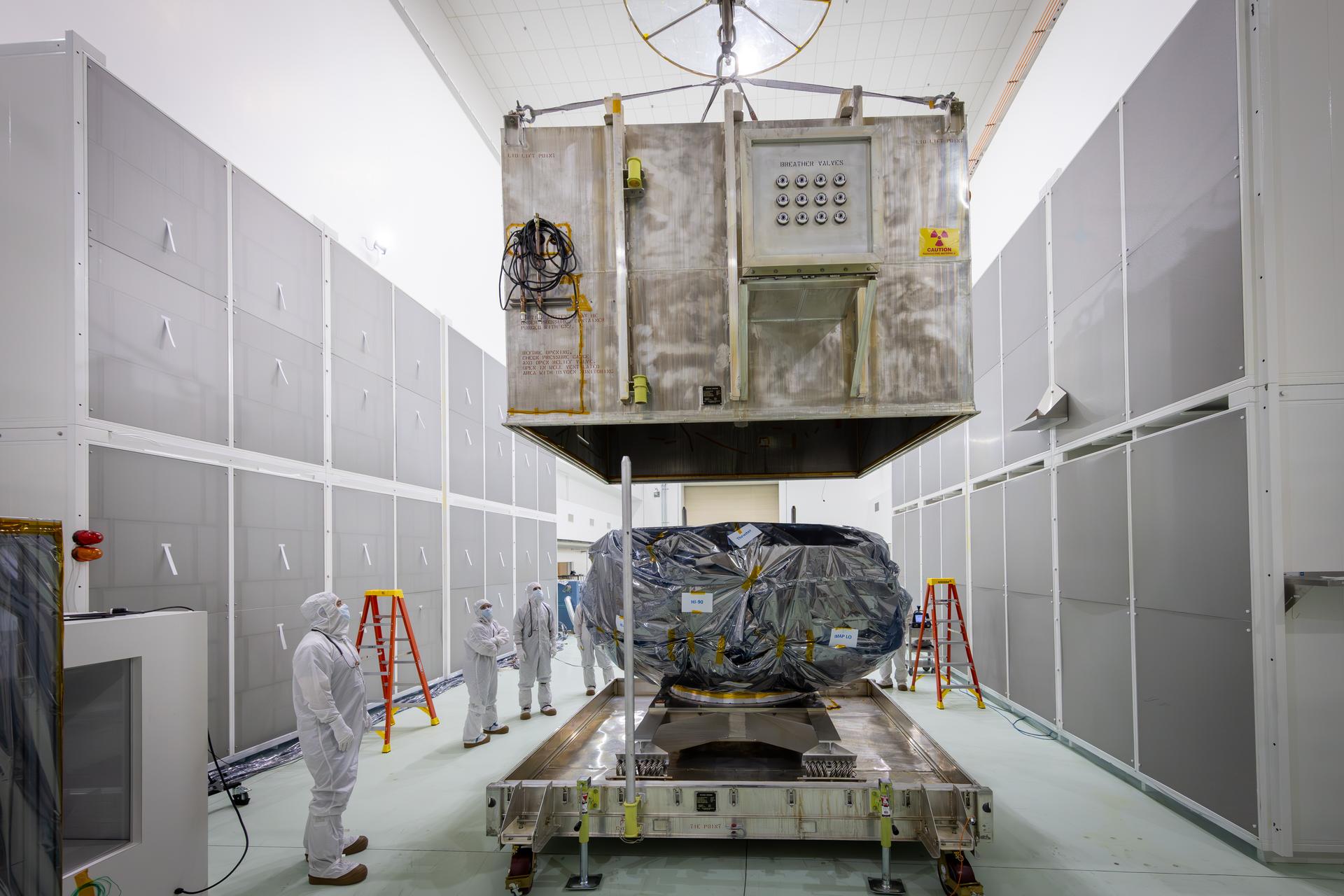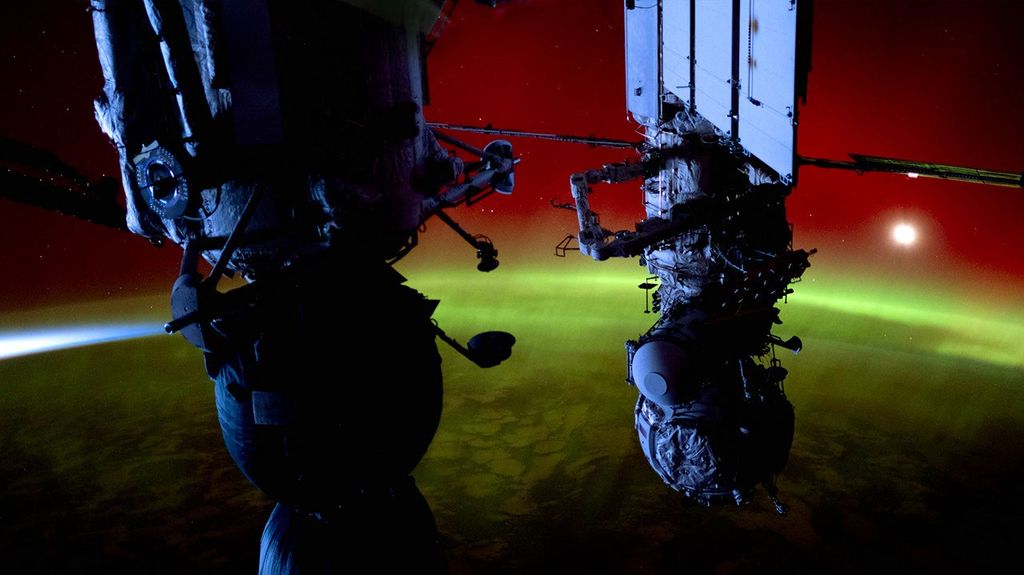NASA’s IMAP Spacecraft Readied for Launch Preparations

Technicians removed NASA’s IMAP (Interstellar Mapping and Acceleration Probe) spacecraft from its shipping container on Thursday, May 29, after transferring it from the airlock into the high bay at the Astrotech Space Operations Facility near the agency’s Kennedy Space Center in Florida. The IMAP spacecraft arrived at the facility on May 10, coming by truck from NASA’s Marshall Space Flight Center in Huntsville, Alabama.
Over the next several months, technicians will prepare the IMAP observatory for launch. Some key upcoming milestones include loading the spacecraft with propellant, joining it with two other spacecraft catching a ride on the same rocket, and encapsulating all three spacecraft together inside the protective payload fairing. Technicians then will transport the encapsulated spacecraft to a hangar at NASA Kennedy, where the team will integrate the spacecraft with its SpaceX Falcon 9 rocket. The mission is targeting launch no earlier than September 2025 from Launch Complex 39A.
As a modern-day celestial cartographer, IMAP also will explore and chart the vast range of particles in interplanetary space, helping to investigate two of the most important issues in heliophysics: the energization of charged particles from the Sun and the interaction of the solar wind with interstellar space. The IMAP mission plans to provide near real-time information about the solar wind to improve advanced space weather warnings from its location at Lagrange Point 1, or L1, located about one million miles away, between the Earth and Sun.
Launching with IMAP are NASA’s Carruthers Geocorona Observatory and the National Oceanic and Atmospheric Administration’s (NOAA) Space Weather Follow On L1 satellite, both of which will arrive in Florida later this year. This mission will be NASA’s Launch Services Program’s 9th mission to fly on a Falcon 9 rocket.
The IMAP mission is the fifth mission in NASA’s Solar Terrestrial Probes Program within the agency’s Heliophysics Division. Princeton University professor David J. McComas leads the IMAP mission with an international team of 25 partner institutions. The Johns Hopkins Applied Physics Laboratory in Laurel, Maryland, built the spacecraft and operates the mission. The Explorers and Heliophysics Project Division at NASA’s Goddard Space Flight Center in Greenbelt, Maryland, manages the program for the agency’s Heliophysics Division of NASA’s Science Mission Directorate.
NASA’s Launch Services Program, based at NASA Kennedy, manages the launch service for the mission.




























